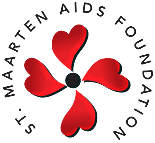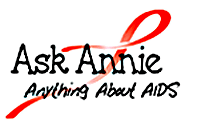knowledge is power get informed
Acquired Immunodeficiency Syndrome (AIDS)
A disease of the body’s immune system caused by the human immunodeficiency virus (HIV). AIDS is characterized by the death of CD4 cells (an important part of the body’s immune system), which leaves the body vulnerable to life-threatening conditions, such as infections and cancers.
See Also: Human Immunodeficiency Virus (HIV),
Opportunistic Infection (OI)
Adherence
Closely following (adhering to) a prescribed treatment regimen. Requires a patient to take the correct dose of a drug at the correct time, exactly as prescribed. Failure to adhere to an anti-HIV treatment regimen can lead to drug resistance.
See Also: Drug resistance
Antiretroviral (ARV)
A drug that interferes with the ability of a retrovirus, such as HIV, to make more copies of itself.
See Also: Antiretroviral Therapy (ART),
Highly Active Antiretroviral Therapy (HAART)
Antiretroviral Therapy (ART)
Treatment with drugs that inhibit the ability of retroviruses, such as HIV, to multiply in the body. The antiretroviral therapy recommended for HIV infection is referred to as highly active antiretroviral therapy (HAART), which uses a combination of drugs to attack HIV at different points in its life cycle.
Antiviral
A natural or man-made substance that can kill or stop the growth of a virus.
ART
See: Antiretroviral Therapy
ARV
See: Antiretroviral
CD4 Cell
Also known as helper T cell or CD4 lymphocyte. A type of infection-fighting white blood cell that carries the CD4 receptor on its surface. CD4 cells coordinate the immune response, which signals other cells in the immune system to perform their special functions. The number of CD4 cells in a sample of blood is an indicator of the health of the immune system. HIV infects and kills CD4 cells, which leads to a weakened immune system.
See Also: CD4 Count
CD4 Count
A measurement of the number of CD4 cells in a sample of blood. The CD4 count is one of the most useful indicators of the health of the immune system and the progression of HIV/AIDS. A CD4 count is used by health care providers to determine when to begin, interrupt, or halt anti-HIV therapy; when to give preventive treatment for opportunistic infections; and to measure response to treatment. A normal CD4 cell count is between 500 and 1,400 cells/mm3 of blood, but an individual’s CD4 count can vary. In HIV-infected individuals, a CD4 count at or below 200 cells/mm3 is considered an AIDS-defining condition.
See Also: CD4 Cell
Drug Resistance
The ability of some micro-organisms, such as bacteria, viruses, and parasites, to adapt so that they can multiply even in the presence of drugs that would normally kill them.
HAART
See: Highly Active Antiretroviral Therapy
HIV
See: Human Immunodeficiency Virus
Human Immunodeficiency Virus (HIV)
The virus that causes Acquired Immunodeficiency Syndrome (AIDS). HIV is in the retrovirus family, and two types have been identified: HIV-1 and HIV-2. HIV-1 is responsible for most HIV infections throughout the world, whereas HIV-2 is found primarily in West Africa.
See Also: Acquired Immunodeficiency Syndrome (AIDS)
Immune System
The collection of cells and organs whose role is to protect the body from foreign invaders. Includes the thymus, spleen, lymph nodes, B and T cells, and antigen-presenting cells.
Immunity
Protection against or resistance to disease.
Immunodeficiency
Inability to produce normal amounts of antibodies, immune cells, or both.
Incidence
The rate of occurrence of new cases of a particular disease in a given population. Other reported as the number of cases per 100,000 people.
See also: Prevalence
Infection
Establishment of an infectious micro-organism in a suitable host. The term is also used to refer to disease caused by an infectious micro-organism.
Mother-to-Child Transmission (MTCT)
The passage of HIV from an HIV-infected mother to her infant. The infant may become infected while in the womb, during labor and delivery, or through breastfeeding.
MTCT
See: Mother-to-Child Transmission
OI
See: Opportunistic Infection
Opportunistic Infection (OI)
An illness caused by any one of various organisms that occur in people with weakened immune systems, including people with HIV/AIDS.
People Living with AIDS (PLWA)
Infants, children, adolescents, and adults with AIDS.
People Living with HIV/AIDS (PLWHA)
Infants, children, adolescents, and adults infected with HIV and/or AIDS.
PLWA
See: People Living with AIDS
PLWHA
See: People Living with HIV/AIDS
Prevalence
The number of people in a population who are affected with a particular disease or condition at a given time. Prevalence can be thought of as a snapshot of all existing cases of a disease or condition at a specified time.
See Also: Incidence
Prevention of Mother-to-Child Transmission (PMTCT)
Prevention of the passage of HIV from an HIV-infected mother to her infant, whether in the womb, during labor and delivery, or through breastfeeding.
Rapid Test
A type of HIV-1 enzyme-linked immunosorbent assay (ELISA) that can detect antibodies to HIV in the blood in less than 30 minutes with greater than 99% sensitivity and specificity. A positive rapid test result should be confirmed by an HIV Western blot test.
See Also: Western Blot
Sexually Transmitted Disease (STD)
Also known as a sexually transmitted infection (STI). Any infection spread by the transmission of organisms from person to person during sexual contact.
Side Effect
An action or effect of a drug (or vaccine) other than desired therapeutic effects. The term usually refers to an undesired or negative effect (adverse effect), such as headache, skin irritation, or liver damage.
Seroconversion
The process by which a newly infected person develops antibodies to HIV. These antibodies are then detectable by an HIV test. Seroconversion may occur anywhere from days to weeks or months following HIV infection.
See Also: Window Period
STD
See: Sexually Transmitted Disease
STI
An abbreviation used for sexually transmitted infection (also known as sexually transmitted disease, or STD).
See Also: Sexually Transmitted Disease (STD)
Syndrome
A set of symptoms or conditions that occur together and suggest a certain disease or an increased change of developing a disease.
T cell
A type of lymphocyte (disease-fighting white blood cell). The T stands for the thymus, the organ in which T cells mature. T cells include CD4 cells and CD8 cells, which are both critical components of the body’s immune system.
See Also: CD4 Cell
Virus
A microscopic organism that requires a host cell to make more copies of itself. Examples of diseases caused by virus infections are AIDS, measles, mumps, rubella, polio, influenza, and the common cold.
Western Blot
A laboratory technique used to detect a specific protein. A Western Blot test to detect HIV proteins in the blood is used to confirm a positive HIV antibody test (ELISA).
White Blood Cell
Also known as leukocyte. The cells make up the immune system and include lymphocytes, monocytes, neutrophils, eosinophils, macrofphages, and mast cells. White blood cells are made by bone marrow and help the body fight infection and other diseases.
Window Period
The time period between a person’s infection with HIV and the appearance of detectable anti-HIV antibodies. Because antibodies to HIV take some time to form, an HIV antibody test will not be positive immediately after a person is infected. The time delay typically ranges from 14 days to 21 days, but varies for different people. Nearly everyone infected with HIV will have detectable antibodies by 3 to 6 months after infection.
Sources: Glossary of HIV/AIDS-related Terms 6th Edition/December 2008 – AIDSinfo




